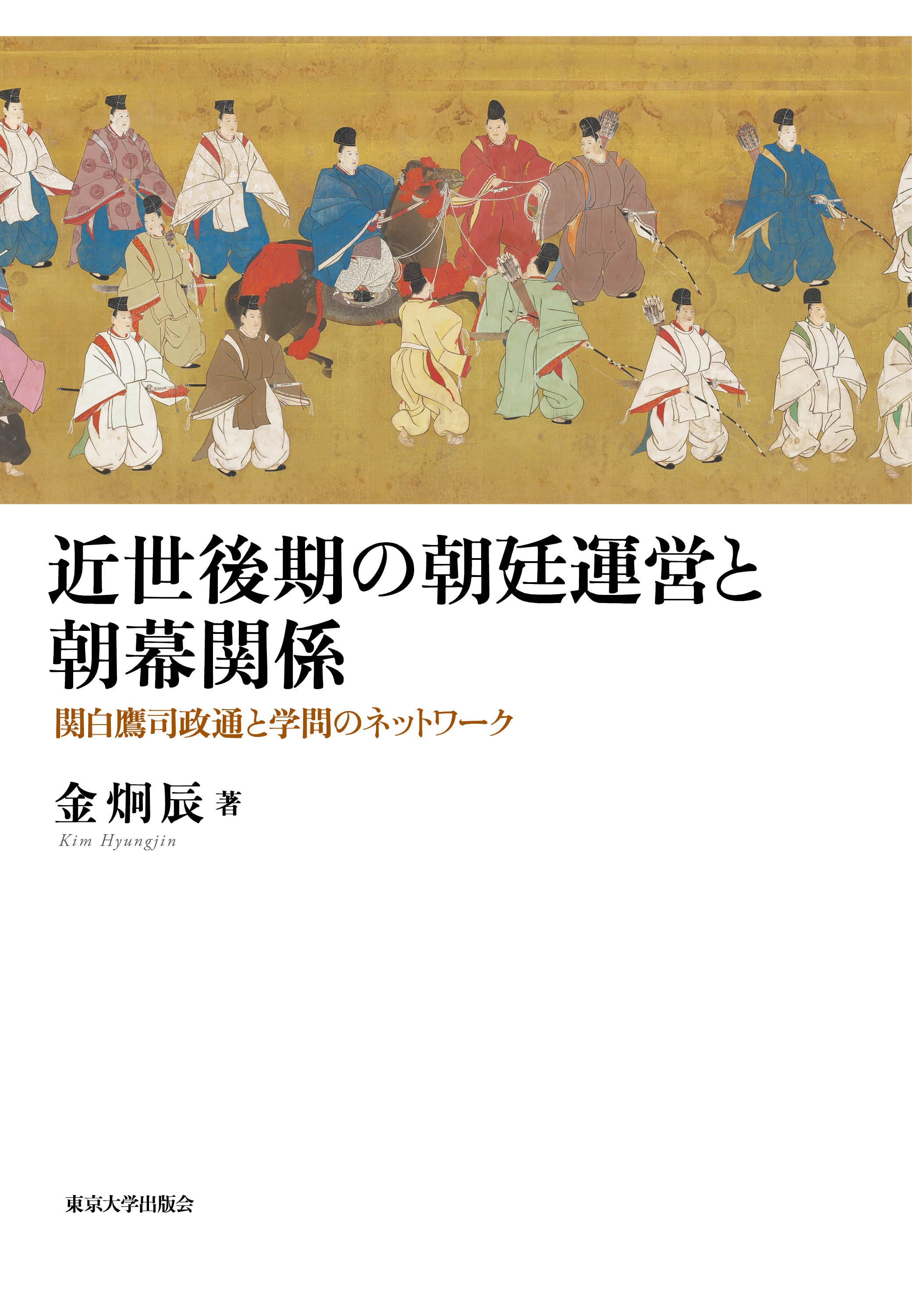
Title
Kinsei Kōki no Chōtei Un’ei to Chōbaku Kankei (Takatsukasa Masamichi and the Academic Network Surrounding Japanʼs Imperial Court, 1800-1850)
Size
344 pages, A5 format
Language
Japanese
Released
March 17, 2025
ISBN
978-4-13-026615-4
Published by
University of Tokyo Press
Book Info
See Book Availability at Library
Japanese Page
What were the underlying factors behind the Japanese emperor's political (re)emergence in the Bakumatsu Era and the Meiji Restoration? A continuous historical perspective is essential to comprehending the broader trends that extend across the pre- and post-Bakumatsu period. This book analyzes the changes surrounding the imperial court during this period, with a particular focus on the role of Takatsukasa Masamichi, the kampaku (imperial chief councilor) in the first half of the 19th century.
In conventional research on Bakumatsu history, the process of the emperor's political emergence, catalyzed by the issue of the imperial sanction for the Treaty of Amity and Commerce between Japan and the United States, has been interpreted as a manifestation of the emperor's resistance against the Takatsukasa Family's control of the imperial court. That is, Masamichi, who had long exercised substantial influence within the imperial court, was supportive of granting imperial approval to the Treaty, while the Emperor's opposition to Masamichi’s entrenched authority is regarded as a critical factor contributing to the postponement of the agreement.
While existing research on the imperial court in the late early-modern era has largely centered on the emperor's commitment to imperial restoration (particularly the revival of rites and ceremonies, etc.) and the intellectual developments supporting these initiatives, little attention has been paid to the Takatsukasa Family's perspective and response to these movements. As a result, a significant disjunction persists between research on Bakumatsu history, which places emphasis on the Takatsukasa Family's control of the imperial court, and scholarship on the late early-modern era, which focuses on the emperor's aspiration for restoration. This book seeks to bridge this gap by focusing on the thoughts and actions of Masamichi, thereby providing a more integrated understanding of the transformations within the imperial court from the late early-modern to the Bakumatsu era.
Very little of Masamichi's diary remains from the 1830s onward, corresponding to the greater part of his tenure as the kampaku. In order to overcome the methodological challenges arising from this paucity of resources, this study sheds light on a collection of historical materials that have received little attention in previous scholarship.
First, by utilizing archival materials from the Takatsukasa Family archives preserved in Archives and Mausolea Department of the Imperial Household Agency, such as memoranda in which Masamichi investigated and verified court precedents, this study demonstrates that Masamichi actively took the initiative in advancing reforms such as the revival of the ritsuryō salary system (including iden and shikiden systems) and the establishment of an educational institution for court nobles. Rather than suppressing the emperor’s and the court nobles' efforts toward reforms that would have significantly altered the structure of the imperial court, Masamichi assumed a leading role in both the explorations and the negotiations with the Tokugawa shogunate to institute these changes.
Secondly, by utilizing historical materials from the Kogido Academy, stored at Tenri University, this study demonstrates that Masamichi maintained a close relationship with Ito Toho (the great-grandson of Ito Jinsai), the fifth head of Kogido. It also reveals that Toho's opinions, frequently consulted by Masamichi, had a profound influence on his actions and, ultimately, on the operation of the imperial court. The significance of this book lies in the fact that it sheds light on the relationship between the civilian scholars of Kogido and the imperial court-an aspect that has been largely overlooked in previous studies.
Lastly, this book addresses key issues in the research on the early-modern imperial court, while also demonstrating the potential for expanding into the fields of academic and cultural movements.
(Written by: KIM Hyungjin / September 22, 2025)
Related Info
The 5th UTokyo Jiritsu Award for Early Career Academics (The University of Tokyo 2024)
https://www.u-tokyo.ac.jp/ja/research/systems-data/n03_kankojosei.html




 eBook
eBook